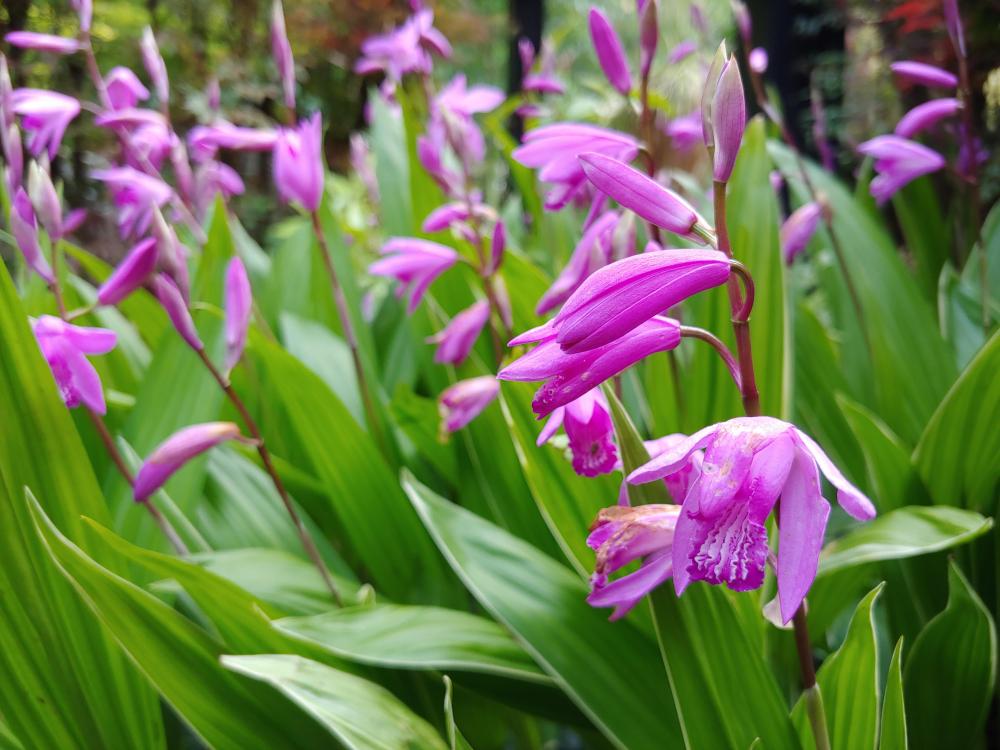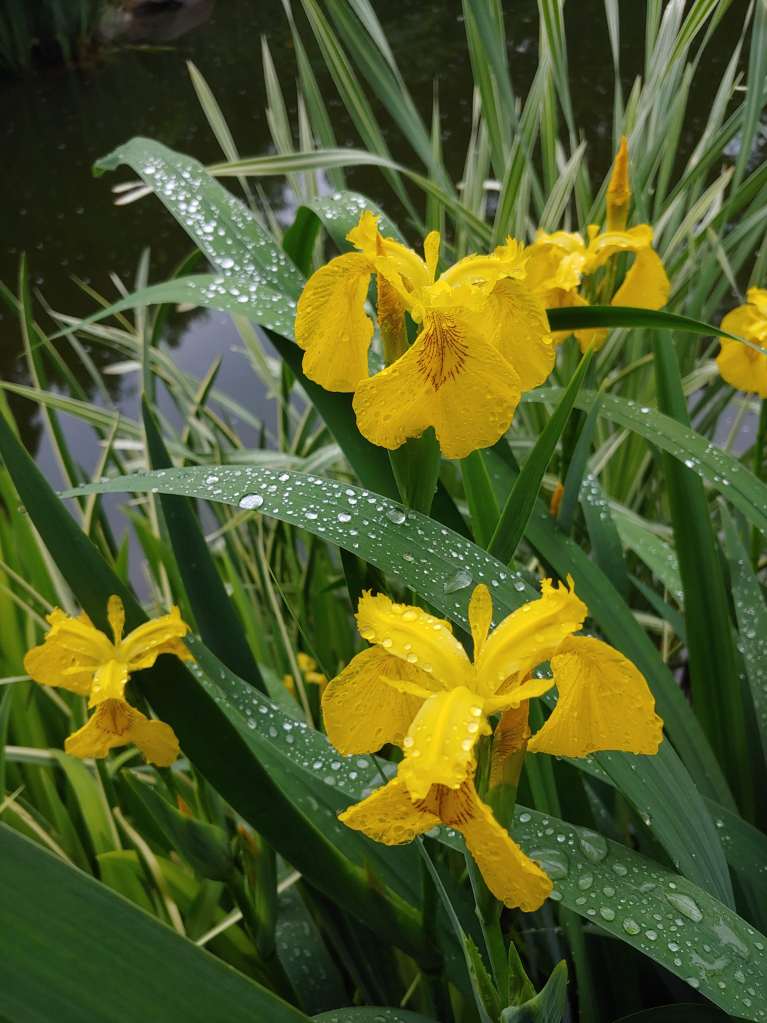At long last, the stone block wall that retains the low end of the koi pond has been repaired, with only a single finger smashed in the process of lifting heavy stones while holding back a branch of the wide spreading Acrocona spruce that hid the partially collapsed wall. Ever helpful, my wife suggests that there are “people” who can help with such tasks, then offers her assistance, after all stones have been reset. She comments (again) that this is work for younger folks, and I agree, but I’m not quite ready to admit I can’t do whatever’s necessary.

There is little rush necessary in getting around to many of the garden’s tasks, and by good fortune the wall did not collapse further and drain the pond. Some calculation was made in midwinter that the repair could be delayed until temperatures were more hospitable, though mud and high humidity today made the conditions for laboring somewhat less than ideal.


While not ready for public viewing, the drainage repair of the pathway area between the stone wall and the garden shed is nearing completion. Until last week, the area remained so soupy that no work could be done except to dig a wide trench in an attempt to dry the area out. With a few days without rain, I figured this might be as good as it gets, so the trench was widened and filled with a mix of river stones. Ferns and a ground cover (still to be determined) will droop over the edge, and the only thing that must be worked out is how to get the mower out of the shed. It’ll work, somehow.

There is a noticeable drop off in the hours of labor required once the early weeks of spring are past. Now, with the exception of repairing walls and drainage, I’m mostly puttering, which means a lot of wandering and admiring, mixed in with plucking a few weeds. This way, it hardly seems like work, though I’m most content once shrubs and hostas fill gaps that cover over most areas where weeds can grow.
Your stand of Bletilla (terrestrial orchid) is gorgeous, & something that’s definitely on my list to try in the future.
For anyone who might be interested, the last time I was recently at our Lowe’s here in Culpeper they had bareroot Bletilla for sale in the section where they have their seeds & summer bulbs. I believe they were one per bag for around $8 or so.
I hesitated before buying my first bletillas, but several became dozens, so the value must be recognized over years. I’d have to dig into the bag to be certain any bulb or root was viable this late in the season.
Actually, since the bags were clear plastic, it was easy to spot viable ones showing some new fresh green sprouts.
After seeing how lovely yours are, I may have to pop back over there & pick out a couple.
With limited light the growth is likely to fragile, so you’ll need to baby them for a few weeks. Keep them moist, and shade them if possible, but I’d buy them.
Are those orchid invasive? Are the Bletilla striata?
Bletilla striata spreads slowly, but steadily by rhizomes. It spreads enough to occasionally share a few, but it’s definitely not invasive.
I did not find it to be too invasive; but was told by those more familiar with it that it is difficult to get rid of from where it is no longer wanted.